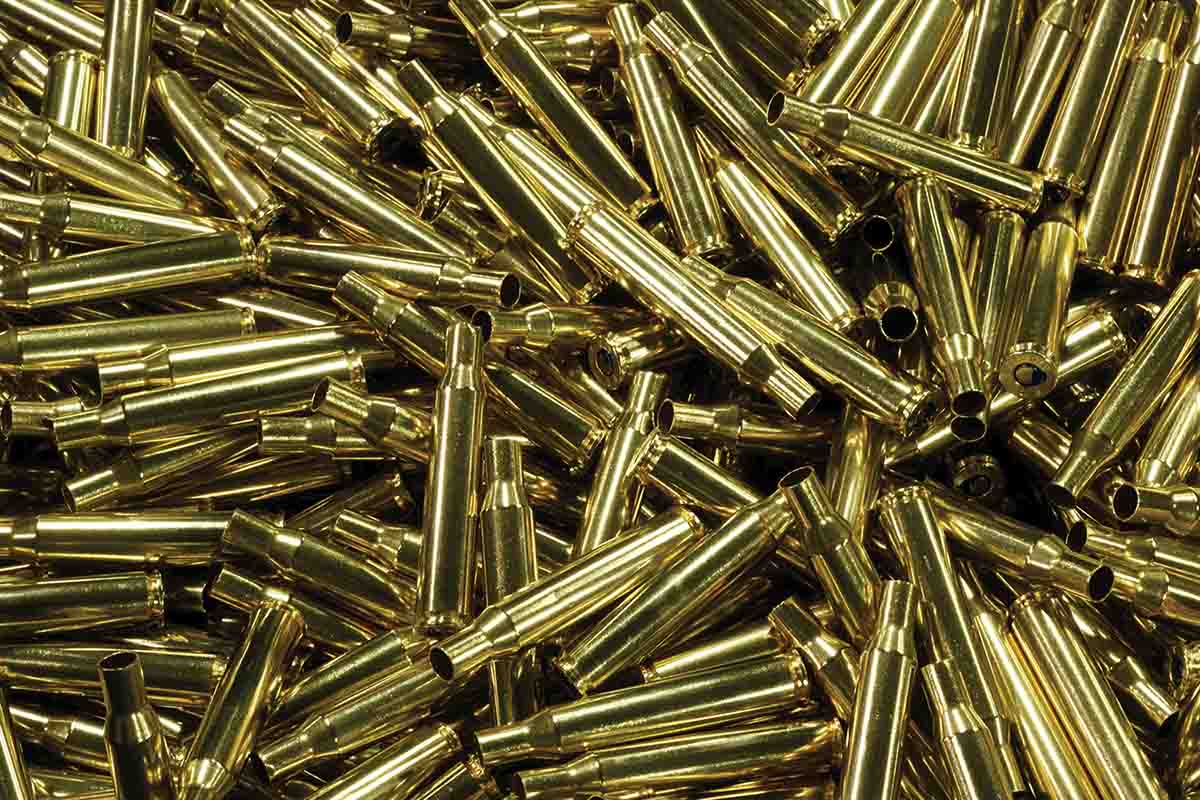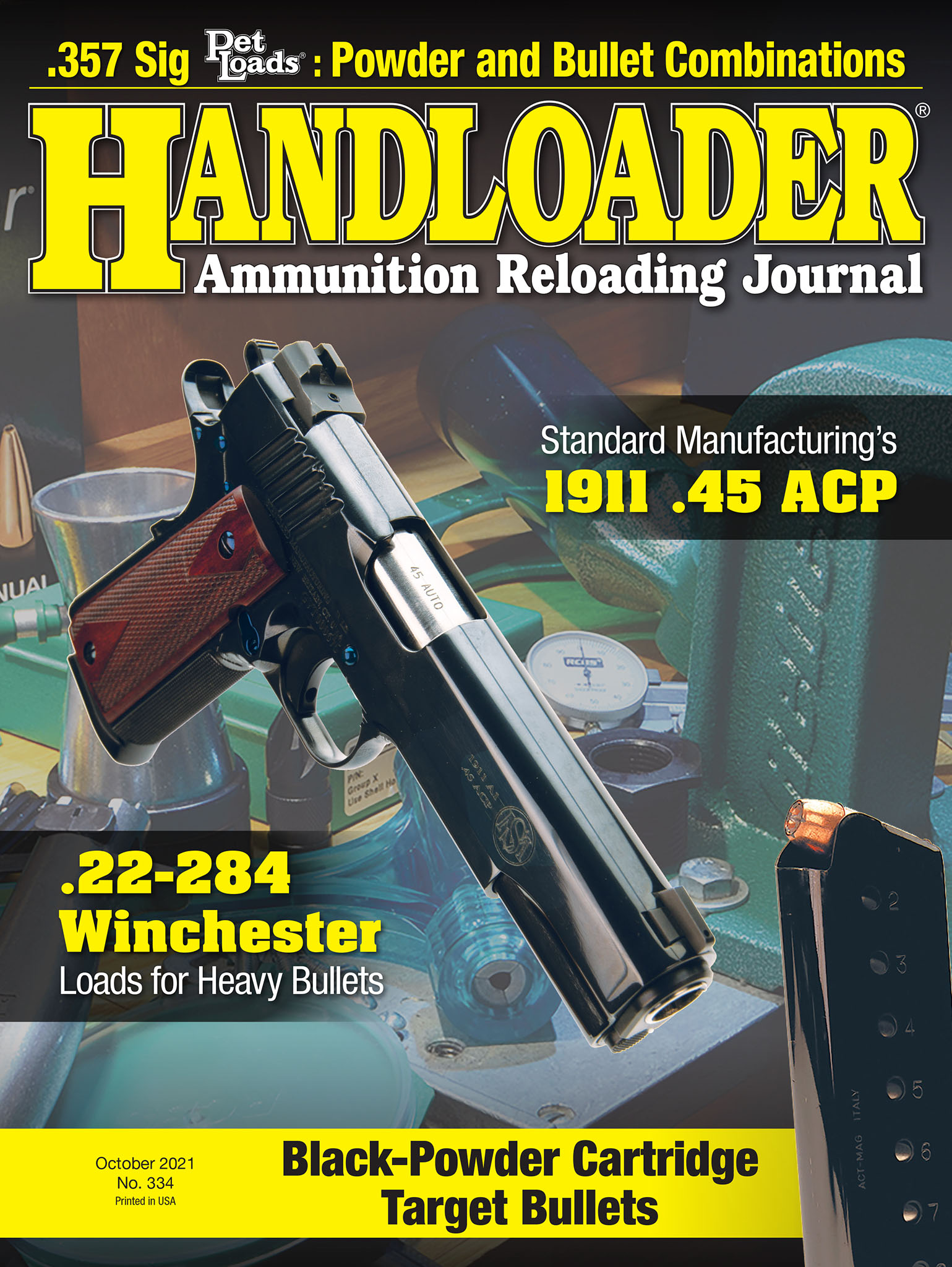In Range
Big and Bigger
column By: Terry Wieland | October, 21

On a related note, a colleague of mine from another magazine, writing about – of all things – fly tying, recently advised his readers that not only was traditional, low-tech lacquer the very best cement for binding the thread wrap, but customers could buy a gallon of it and 20 years later it would be just as clear and golden and viscous as the day it was opened. In other words, go big.
The same applies to many things shooters use. Buying in bulk is more expensive, but it saves money in the long run. You make fewer trips to the store, and shoppers don’t run the risk of looking for some tried-and-true material only to find it’s no longer available, or outlawed on dubious environmental grounds.
When I was 16, a family friend undertook to teach me how to handload, and I spent many hours on the second floor of his two-story house. From the outside, no one had any idea what was in there, but it contained his collection of Thompson submachine guns, a few Schmeissers, and a tripod-mounted, water-cooled Colt machine gun. Beside his loading bench was a five-gallon pail of surplus 4831.
“Best rifle powder you can find,” he told me, dipping out a cup-full for me to measure charges from. “I’ll never run out.”
Another friend did the same thing with a 20-pound keg of Bullseye. He bought it in the 1960s and was still loading .38 Specials from it 40 years later.
Aside from the economic benefits, there is the factor of consistency. Benchrest shooters agonize about this, from primers to powder. They not only want the same type of primer, but they also want them from the same production lot. It doesn’t happen so much now, with primers being vastly better, but loading data used to include even the primer lot number.
This is also important for those who experiment with loads on the edge of peril. This is not something I do or would recommend – just the opposite, in fact – but that doesn’t stop people going far beyond published maximums. Switching to a hotter primer, inadvertently or otherwise, can push pressures well beyond safe limits. By purchasing primers by the brick (10 boxes of 100 each), you can avoid having to worry about such things until the time comes to buy another thousand.
The same applies to powders. If you have a powder you always use, you may as well buy a 5- or 8-pound keg and not have to worry about it for a while. This also leaves a handloader in a very enviable position when, as now, shortages occur. It’s comforting to look at 5 pounds of Bullseye, a thousand primers and a bin full of brass.
This principle applies equally to oils and solvents. One time, I bought a gallon can of Hoppe’s No. 9 for a gunsmith friend of mine, who was celebrating a birthday. His eyes really lit up when he saw that can with the yellow label and the big red ‘9.’
When dealing with large containers like that, care needs to be taken to avoid contamination. It’s not usually life-threatening with things like Hoppe’s No. 9 or Ballistol, but it degrades its effectiveness. When I was young and just embarking on my lifelong romance with Hoppe’s, I used to put a patch on a jag, then dip the whole thing into the bottle. Although the patch was clean, the jag wasn’t, and pretty soon the solvent turned a muddy hue.
Now, I decant a little into a cup, then apply it with an eye-dropper. Any that’s left when I’m finished is perfectly clean and can be poured back into the big can. If this seems unduly fastidious, all I can say is, it works well and saves time in the long run.
The world of gun cleaning has come a long way in 50 years, and some of the solvents now are far better than we used to have. They may not smell as nice as Hoppe’s, but they will remove copper fouling in a fraction of the time. Two I particularly like are Wipe-Out and Wipe-Out No-Lead. As far as I can find, these are not available in large containers. A couple of years ago, Wipe-Out became almost unobtainable – out of stock everywhere I looked. Once I found some, I bought several cans.
Of course, with anything resembling an aerosol, you run the risk that while it’s sitting on your shelf, the pressure will dissipate, or whatever pressure does in those things, and the money you thought you saved buying a bunch becomes money wasted as you throw them out.
However, always in search of viable back-up plans, there is Hoppe’s Benchrest 9, which doesn’t smell as nice, and takes longer to decopperize a barrel than Wipe-Out, but it does come in large bottles, doesn’t go bad and can sit on your shelf indefinitely.
In normal times, things like powder and primers are not terribly expensive and buying in bulk is affordable for most of us. If I remember correctly, a brick of Federal Gold Medal primers was $39.95 plus tax on the shelf at Graf & Sons, whereas buying a tray of 100 would cost you $5. Right there, you’re saving yourself a dollar a tray. Yet, I’ve met people who think they are splurging wildly when they buy three trays and still complain about the price.
And bullets? Buy bullets by the thousand. Trust me. They don’t go bad either.
Gene Hill, the longtime writer for Field & Stream, advised more than once, “If you find something you like, buy two, because they’re sure to stop making it.” That is, alas, all too true, and Hill wrote that in the 1970s, before the era of CNC reduced product life cycles from years to months to, seemingly, days. Now, products are barely on the market before they have been withdrawn, and, more and more, the chorus of ill-informed judgement on the internet seems to be the deciding factor.
Smokeless powder does not, generally speaking, have the longevity of black powder. It can and does deteriorate, particularly if it’s stored incorrectly, but that’s a small risk to take. I’ve had it happen only once in 50 years.
A half-century ago, when there was a limited number of powders available and a new one was a big event, the old standbys stuck around forever. Now, new powders come along regularly, and there are importers bringing in a wide variety from Europe and Australia, among other places. This provides a lot of choice, but it also means a powder can disappear from the shelves for any number of reasons, sometimes never to be seen again.
When it’s a powder with some particular applications, like IMR SR-4759, the loss can be grievous. IMR (Hodgdon) insisted that Trail Boss took the place of SR-4759, just as IMR-4227 had replaced Bulk Shotgun as the priming powder for black-powder duplex loads. The thing is, the new one might or might not work the way you want. Buying a large container while you have the chance is inexpensive insurance.
I don’t think this is exactly what Al Gravelle had in mind when he told us to go big, but he’d probably approve. Sergeants have well-honed survival instincts


